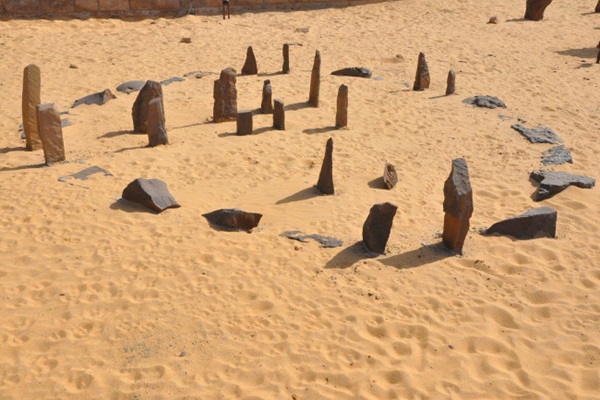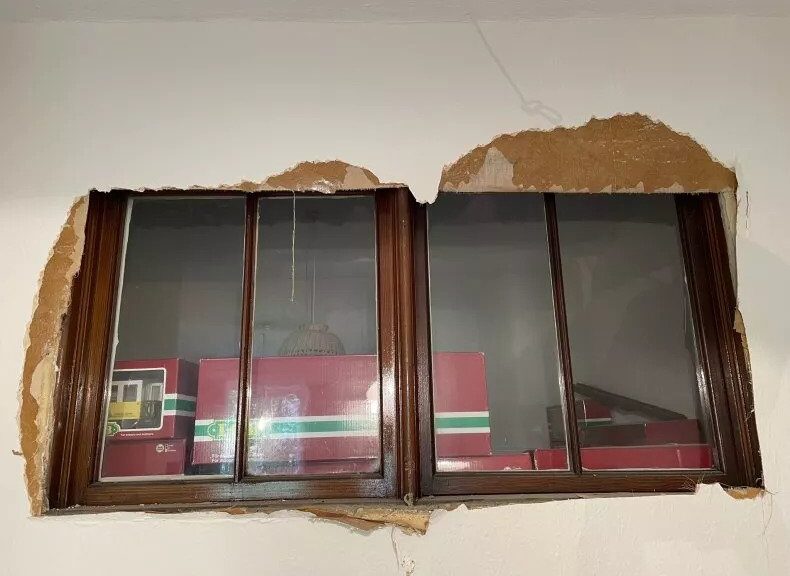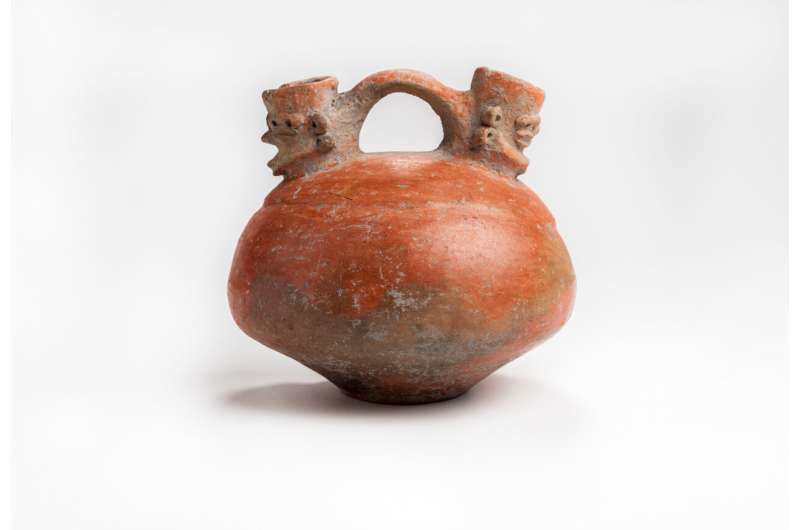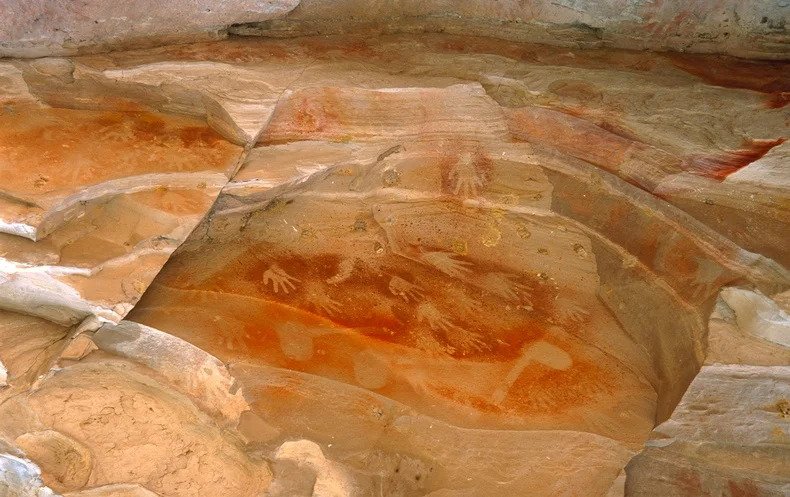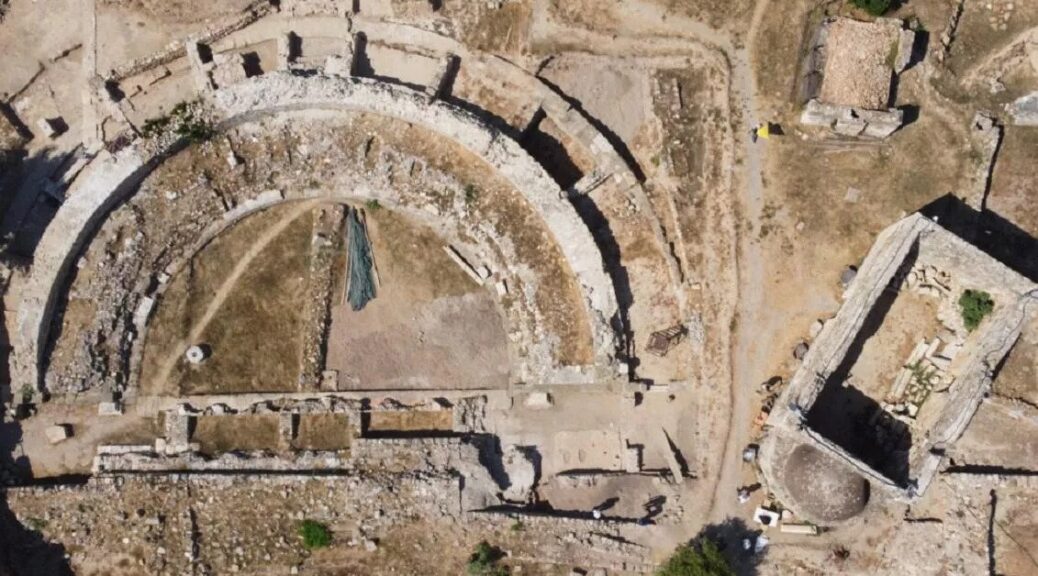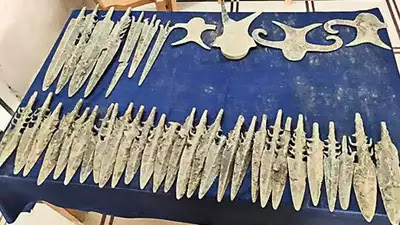Nabta Playa: The world’s first astronomical site was built in Africa and is older than Stonehenge
Ancient societies all around the world erected massive stone circles like celestial clocks, aligning them with the sun and stars to mark solstices. These early calendars foretold the coming of the seasons, helping civilizations track when to plant and harvest crops. They were also connected with religion and served as special ceremonial sites.
Located in Africa, Nabta Playa was once a large internally drained basin in the Nubian Desert, located approximately 800 kilometres south of modern-day Cairo and about 100 kilometres west of Abu Simbel.
Today the region is characterized by numerous archaeological sites. The Nabta Playa archaeological site, one of the earliest of the Egyptian Neolithic Period, dated to circa 7500 BC.

By the 7th millennium BC, exceedingly large and organized settlements were found in the region, relying on deep wells for sources of water. Huts were constructed in straight rows. Sustenance included fruit, legumes, millets, sorghum and tubers. Also in the late 7th millennium BC, but a little later than the time referred to above, goats and sheep, apparently imported from Western Asia, appear. Many large hearths also appear.

In the 1960s, a prominent American archaeologist named Fred Wendorf wanted to search for the ancient origins of Pharaonic Egypt, away from the Nile River. When he was taken out to the site, he first thought they were natural formations. But he soon realized that the site was once a large lakebed that would have destroyed any such rocks. He would return many times over the course of decades. Then, during excavations in the early 1990s, Wendorf and a team of excavators, including Polish archaeologist Romuald Schild, uncovered a circle of stones that seemed to be aligned with the stars in some mysterious way.

THE FIRST ASTRONOMICAL OBSERVATION
By the 5th millennium BC, these peoples had fashioned what may be among the world’s earliest known archaeoastronomical devices (roughly contemporary to the Goseck circle in Germany and the Mnajdra megalithic temple complex in Malta). These include alignments of stones that may have indicated the rising of certain stars and a “calendar circle” that indicates the approximate direction of summer solstice sunrise. “Calendar circle” may be a misnomer as the spaces between the pairs of stones in the gates are a bit too wide, and the distances between the gates are too short for accurate calendar measurements.” An inventory of Egyptian archaeoastronomical sites for the UNESCO World Heritage Convention evaluated Nabta Playa as having “hypothetical solar and stellar alignments.”
Astrophysicist Thomas G. Brophy suggests the hypothesis that the southerly line of three stones inside the Calendar Circle represented the three stars of Orion’s Belt and the other three stones inside the calendar circle represented the shoulders and head stars of Orion as they appeared in the sky. These correspondences were for two dates – circa 4800 BC and at precessional opposition – representing how the sky “moves” long term. Brophy proposes that the circle was constructed and used circa the later date, and the dual date representation was a conceptual representation of the motion of the sky over a precession cycle.
Near the Calendar Circle, which is made of smaller stones, there are alignments of large megalithic stones. The southerly lines of these megaliths, Brophy shows, aligned to the same stars as represented in the Calendar Circle, all at the same epoch, circa 6270 BC. The Calendar Circle correlation with Orion’s belt occurred between 6400 BCE and 4900 BC, matching the radio-carbon dating of campfires around the circle.

NEW SUGGESTIONS
A 2007 article by a team of University of Colorado archaeoastronomers and archaeologists (three members had been involved in the original discovery of the site and its astronomical alignment) has responded to the work of Brophy and Rosen, in particular their claims for an alignment with Sirius in 6088 and other alignments which they dated to 6270, saying that these dates were about 1,500 years earlier than the estimated dates. The Sirius alignment in question was originally proposed by Wendorf and Malville, for one of the most prominent alignments of megaliths labelled the “C-line”, which they said aligned to the rising of Sirius circa 4820 BCE.
Brophy and Rosen showed in 2005 that megalith orientations and star positions reported by Wendorf and Malville were in error, noting that “Given these corrected data, we see that Sirius actually aligned with the C-line circa 6000 BCE. We estimate that 6088 BCE Sirius had a declination of -36.51 degrees, for a rising azimuth exactly on the C-line average”. Malville acknowledged the corrections made by Brophy and Rosen, but concluded the C-line of megaliths “may not represent an original set of aligned stele; we refrain from interpreting that alignment.”
They also criticised suggestions made by Brophy in his book The Origin Map that there was a representation of the Milky Way as it was in 17,500 BCE and maps of Orion at 16,500 BC, saying “These extremely early dates as well as the proposition that the nomads had contact with extraterrestrial life are inconsistent with the archaeological record. Inference in archaeoastronomy must always be guided and informed by archaeology, especially when substantial fieldwork has been performed in the region.
They propose that the area was first used as what they call a “regional ceremonial centre” around 6100 BC to 5600 BC with people coming from various locations to gather on the dunes surrounding the playa where there is archaeological evidence of gatherings which involved large numbers of cattle bones, as cattle were normally only killed on important occasions.
Around 5500 BCE a new, more organised group began to use the site, burying cattle in clay-lined chambers and building other tumuli. Around 4800 BC a stone circle was constructed, with narrow slabs approximately aligned with the summer solstice, near the beginning of the rainy season.
More complex structures followed during a megalith period the researchers dated to between about 4500 BC to 3600 BC. Using their original measurements and measurements by satellite and GPS measurements by Brophy and Rosen they confirmed possible alignments with Sirius, Arcturus, Alpha Centauri and the Belt of Orion. They suggest that there are three pieces of evidence suggesting astronomical observations by the herdsmen using the site, which may have functioned as a necropolis.
“The repetitive orientation of megaliths, stele, human burials and cattle burials reveals a very early symbolic connection to the north.” Secondly, there is the orientation of the cromlech mentioned above. The third piece of evidence is the fifth-millennium alignments of stele to bright stars.
They conclude their report by writing that “The symbolism embedded in the archaeological record of Nabta Playa in the Fifth Millennium BC is very basic, focussed on issues of major practical importance to the nomads: cattle, water, death, earth, sun and stars.”
